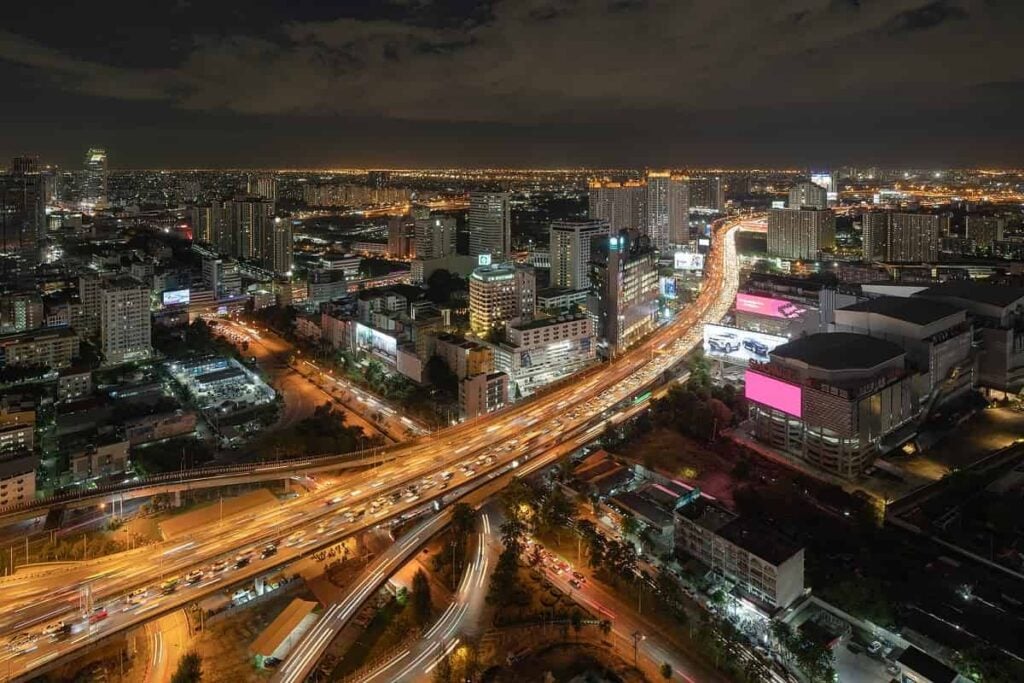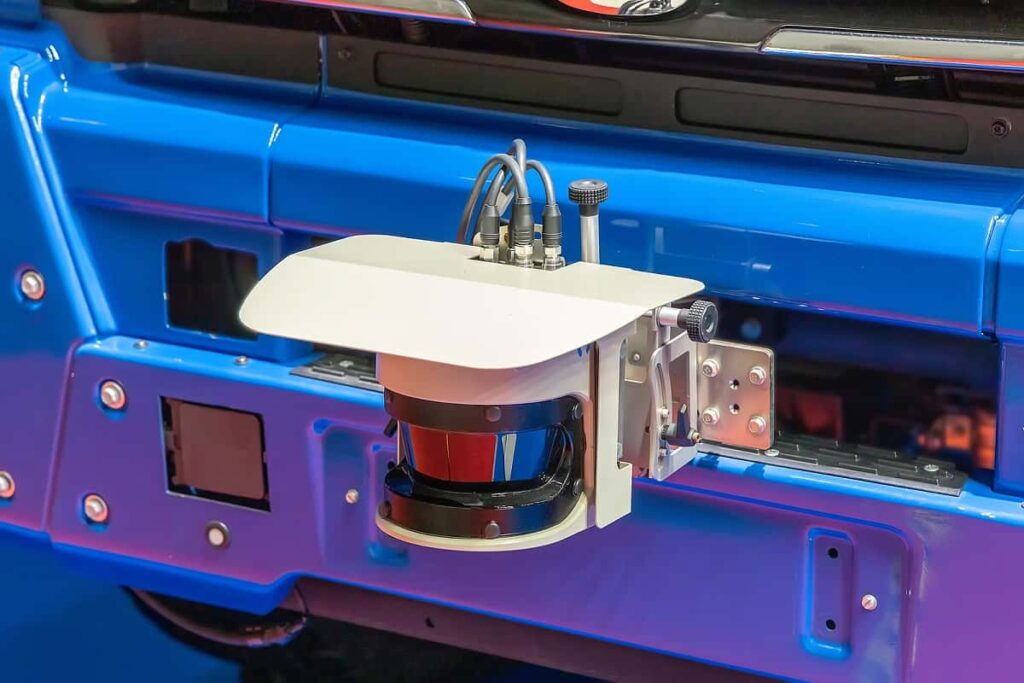Robot Security Guards from Knightscope
Table of contents

We first covered Knightscope and its robot security guards in our article on “7 Security Robots “Complementing” Security Guards” late last year. These autonomous Daleks are set to disrupt the $34 billion US security services industry, and with the ongoing wage issues and unionization of security guards, the time is ripe for technology to “help out”. Since Knightscope has released its first annual report to equity crowdfunding investors, we decided to take a closer look at where they are now.
About Knightscope
Founded in 2013, Silicon Valley startup Knightscope has raised $40 million in funding to develop a suite of autonomous security robots. Their latest funding round was regulation A+ equity crowdfunding combined with several related private placement transactions outside of reg A+, netting the company $25 million in early 2018. This oversubscribed funding round was a good example of what the JOBS Act was trying to achieve, that is, making it possible for retail investors to fund startups in exchange for equity. Knightscope’s vision, according to their website, is to “predict and prevent crime utilizing autonomous robots, analytics, and engagement”. According to their calculations, the economic impact of crime in the US is above $1 trillion each year, and they’re “on a mission to cut it in half”. The company is planning to do so with an offering of four autonomous robots equipped with a multitude of sensors including audio, video, thermal imaging, and weapons detection.
Robot Security Guard Models
The Knightscope core offering consists of the K3 indoor and K5 outdoor mobile robots. While roaming malls, campuses, or parking lots, these futuristic deputies record and stream 360-degree live video, recognize license plates, listen to suspicious sounds, detect people, and do thermal imaging. They aren’t equipped to engage with wrongdoers, but alert security personnel or the police in case they find anything suspicious.

In additional to the mobile robots, Knightscope has also developed a stationary robot called K1, optimized for building entry and exit points. Looking like a prop from Blade Runner, this monolith covers all the functionality of its mobile cousins and will also be able to detect concealed weapons. The K1 is expected to be launched later this year.

The last offering is the K7 robot, optimized for rugged terrain, and currently under development. It will carry all the functionality of its smaller counterparts and will be useful in environments such as airports, prisons, power utility substations, and solar and wind farms, Knightscope says. The team is planning to launch the K7 beta this year as well.

The company offers its robots for lease and their full-service package includes setup and configuration, software and hardware upgrades, charging stations, support, and maintenance. They come with a Security Operations Center that feeds live data to security personnel, stores data history for analytics, and provides forensics. When used for 24/7 shifts, prices are below the median pay of security guards in the US ($14.78 per hour) with the K1 costing $6.16 per hour and the K3 or K5 $8.9 per hour. The price can go higher with extra options like the parking monitor package, the interactions package or the after-hours package.
Knightscope is carefully positioning its suite of mechanical security guards as working alongside humans, but there is a real chance they’ll be joining the list of “3 Autonomous Robots That May Steal Your Job”. Knightscope is used by clients at 36 locations across the US, including campuses of large companies like Microsoft, Uber, and the Sacramento Kings. These robo-cops are already making a difference, helping police issue an arrest warrant for a sexual predator, deterring vehicle break-ins, and helping apprehend thieves in a mall.
Knightscope’s financials
As a result of receiving equity crowdfunding, the company will be issuing public annual reports, the first of which was released on April 30th, 2018. Knightscope’s books show an accumulated deficit of $23.6 million and current assets and liabilities stand at a notch lower than $16 million which means a large part of their funding is covering the costs of product development. Their latest income statement covers two years, and while revenue has increased to $1.6 million in 2017 (+293%), cost of services also increased to $4.6 million (+137%) resulting in a gross loss of $3 million. This was further offset by a large bump in sales and marketing costs (+353%) resulting in a net loss of $12.4 million (-113%).

In their investor update from January 2018, Knightscope puts these issues down to unexpected machine maintenance and operating costs coupled with high data communications costs. According to the report, the company is planning to streamline their sales process and overall costs to achieve scalable growth and reach profitability as soon as possible instead of looking for more funding. They haven’t explained how they will do this though, and with their current ratio of revenue to operating costs the model is unsustainable. Theoretically more marketing will mean more sales, but with this cost structure, this will only run the company deeper into the red.
Security Robot Runs Over Kids and Drowns Itself
The robots of Knightscope have also had their issues following market launch. In 2016, a K5 model knocked down and ran over a 16-month-old toddler by accident (or so it said) in the Stanford Shopping Center. The report also mentions that another child was allegedly hurt by the robot a few days before this incident. Knightscope issued a formal apology to the family, but also mentioned the K5 tried to avoid collision in the same statement. Another accident has seen a newly introduced K5 fall down some stairs right into an office complex’s water feature. Let’s hope that robot was the one that doesn’t like kids.

The company’s robots have also been the cause of some controversy in Silicon Valley. Late last year, the San Francisco SPCA rented a robot to patrol the area around their facilities. Rumors were that the robot was enlisted to prevent homeless encampments on the sidewalk. A week after the K5 was put to work, a group of homeless people allegedly threw a tarp over it, knocked it over, and smeared BBQ sauce on its sensors. Following coverage of the incident and the ensuing public outrage, the SPCA denied their intent was anti-homeless, then discontinued using the service altogether.
Then there’s the ever-present problem of security guards having to deal with drunks. Earlier in 2017, a drunken man knocked another K5 over in a Mountain View parking lot. Again, this raised questions about the right to privacy in public places as well as the need for Knightscope to educate the population about their security surveillance. Following the Parkland school shooting, the company has announced a contest for students to write about how autonomous security robots can help in a school setting with the winning institution receiving $500,000 worth of services over the next two years. (How this will help a company that has only $1.5 million in revenues, we’re not sure.) Whether this was a publicity stunt or the team feels there is a genuine opportunity to curb school shootings (which are a statistical anomaly compared to other risks) remains to be seen.
Conclusion
Whether Knightscope somehow reaches break-even or goes for further funding rounds remains to be seen. At the moment, their business is hemorrhaging cash and it will continue to do so until the basic operating model is fixed. The company doesn’t have too much leeway in the way of pricing as they’re capped by security guards’ wages, so strict cost control will be the key for Knightscope’s future success. They’ll also need to cross their fingers and hope the robots behave themselves around children going forward.
Sign up to our newsletter to get more of our great research delivered straight to your inbox!
Nanalyze Weekly includes useful insights written by our team of underpaid MBAs, research on new disruptive technology stocks flying under the radar, and summaries of our recent research. Always 100% free.














